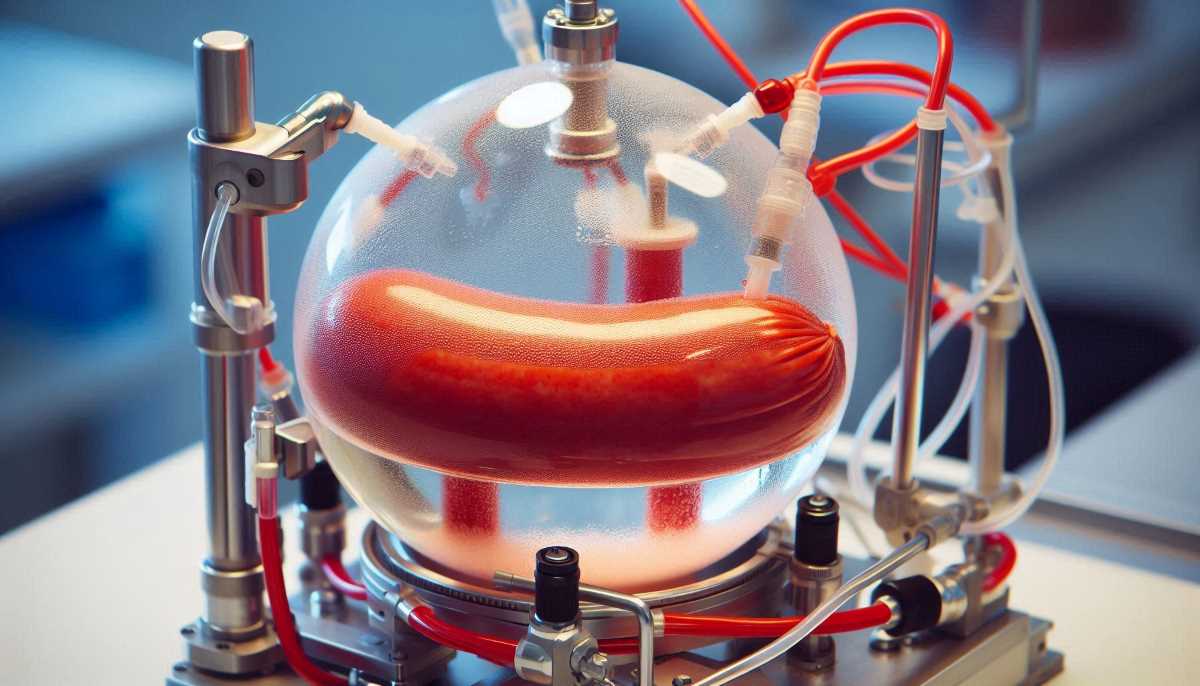Inside the Artificial Stomach That Mimics Human Digestion
Mexican researchers ditch boring drug testing with a biomimetic, sausage-loving artificial stomach! This "stomach in a bottle" mimics real stomach movement to test how meds dissolve, paving the way for a future of tastier (well, not really) and more accurate drug testing.

Forget beakers and Bunsen burners, the future of pharmaceutical testing is here, and it involves sausages, melons, and a whole lot of squishing. Researchers at the UNAM Institute of Applied Sciences and Technology (ICAT) in Mexico have ditched the rudimentary "shake-it-in-a-tank" method and created a marvel of biomimicry: an artificial stomach that churns, relaxes, and disintegrates food just like the real thing.
This isn't some dystopian vision of replacing human bellies with countertop appliances (although, let's be honest, who wouldn't want a pause button on digestion sometimes?). No, this "stomach in a bottle," as the playful researchers like to call it, is designed to revolutionize drug testing.
Pretend you live in a world where medications aren't just tossed into vats of generic stomach juice, but instead, gently nudged and kneaded by a friendly, artificial digestive system. This is the dream of Dr. Gabriel Ascanio Gasca and Dr. Alberto Caballero Ruiz, the masterminds behind this unusual contraption.
"It's not for implanting in people," Dr. Ascanio Gasca assures us, "but it can be a huge help in understanding how medications dissolve." Currently, the pharmaceutical industry relies on a rather dull system – think of a washing machine on a low spin cycle. This "agitator method," as they call it, doesn't quite capture the nuanced behavior of the human stomach.
The ICAT team's invention, however, is a party in a petri dish. Their creation boasts a translucent chamber that allows them to witness, in all its glory, the breakdown of food (or medicine) happening in real-time. Try picturing a miniature disco ball pulsating as it breaks down a juicy sausage – that's the kind of science happening here.
But it's not just about the light show. The magic lies in the intricate movements. The stomach, for all its squishy glory, is a surprisingly active organ. It constantly contracts and relaxes, a process known as peristalsis, which helps churn food and move it along the digestive highway. The ICAT stomach replicates this action with surprising accuracy, complete with the gentle pressure levels found in a real human belly (because, let's face it, nobody wants a raging case of heartburn in their artificial stomach).
The results so far are mouthwatering (well, maybe not literally). The team has successfully tested their creation on both melon and sausage, proving that mimicking the stomach's movements leads to significantly better breakdown compared to traditional methods. This is a game-changer for drug testing, allowing for a more accurate prediction of how medications will behave once they enter the human digestive system.
But the mad scientists at ICAT aren't stopping there. They're already setting their sights on the next frontier – the duodenum, where the real magic of nutrient absorption happens. Their goal? To create an entire "digestive disco," replicating the entire breakdown process from start to finish.
This research has the potential to revolutionize not just drug testing, but also the development of nutritional supplements and even personalized nutrition plans. Imagine a future where scientists can predict exactly how your body will react to a specific type of food, all thanks to a little "stomach in a bottle."






Sausage meets science! Researchers test their artificial stomach with a not-so-scientific snack. Credit: UNAM
In other words, the next time you think about digestion, abandon the boring textbook diagrams. Think instead of a pulsating, sausage-churning disco ball, and the dedicated scientists who are making the science of digestion both fascinating and functional. The future of health is looking, well, a bit more delicious.




